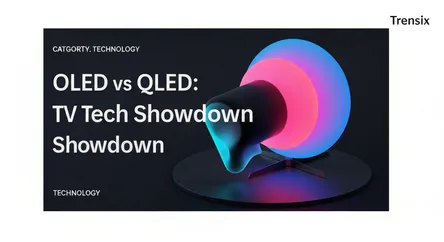Technology
OLED vs QLED: TV Tech Showdown

Confused between OLED and QLED for your next TV? We break down the key differences in display technology to help you choose the perfect screen.
What is it?
OLED vs QLED is the central debate in modern television technology. OLED (Organic Light Emitting Diode) screens feature pixels that generate their own light, allowing individual pixels to turn off completely for perfect blacks and infinite contrast. QLED (Quantum Dot Light Emitting Diode) is a variation of LED LCD technology that uses a quantum dot color filter in front of an LED backlight. This allows QLED TVs to produce a wider range of vibrant colors and achieve higher peak brightness levels than traditional LED TVs.
Why is it trending?
The trend is fueled by the consumer demand for superior home viewing experiences, especially with the rise of 4K HDR content on streaming platforms. As both technologies become more mainstream and competitively priced, buyers are more invested in understanding which is better. Marketing from major brands like LG (OLED) and Samsung (QLED) has intensified the rivalry, making it a hot topic for anyone shopping for a premium television.
How does it affect people?
This choice directly impacts a user's viewing experience and budget. OLED is often preferred for cinematic viewing in dark rooms due to its unparalleled contrast and black levels. However, it can be susceptible to burn-in with static images. QLED excels in bright rooms with its powerful brightness, vibrant colors, and lower risk of burn-in, making it a versatile choice for gaming, sports, and general daytime TV watching. Ultimately, the decision shapes how consumers enjoy their digital content at home.